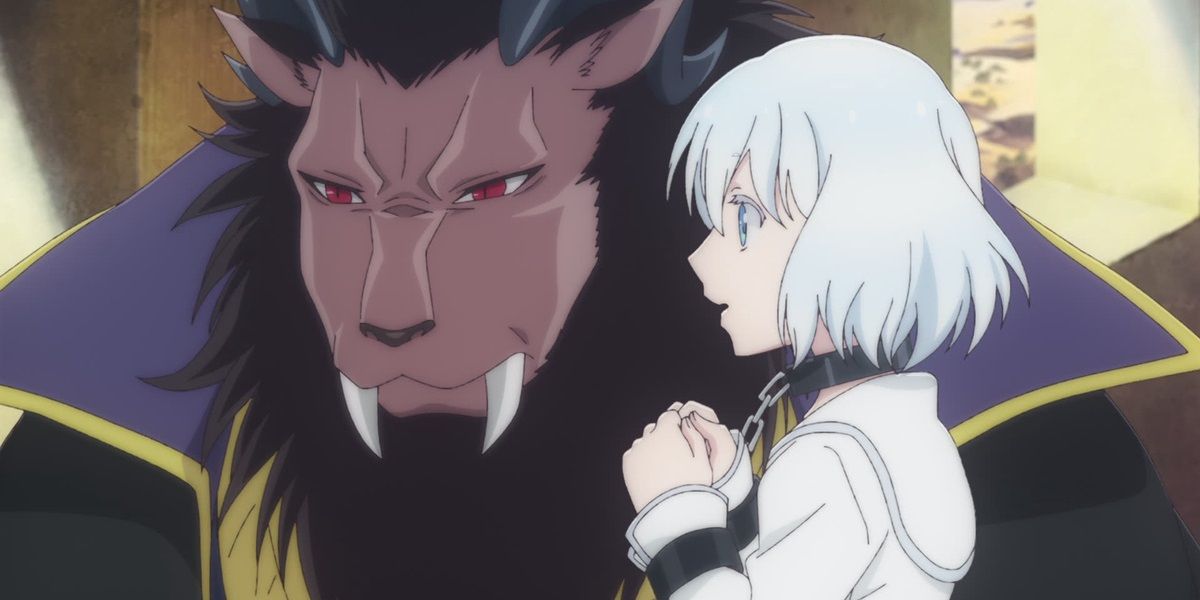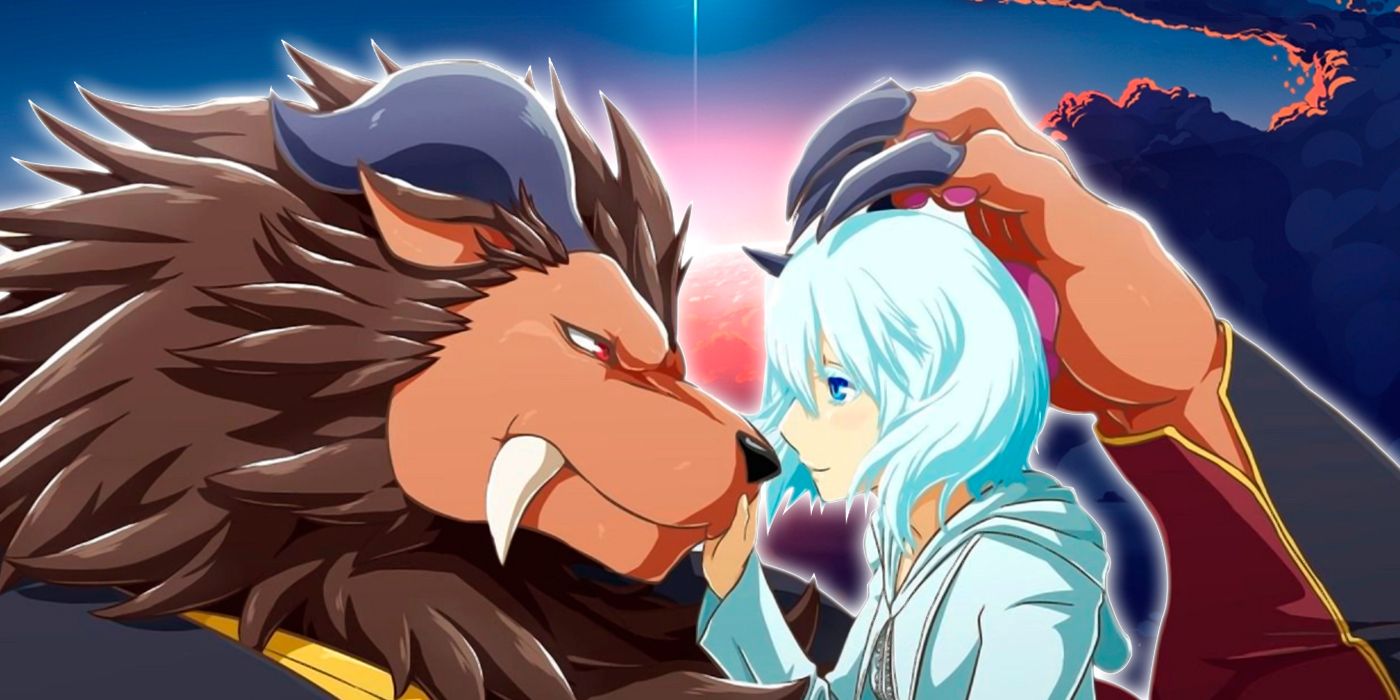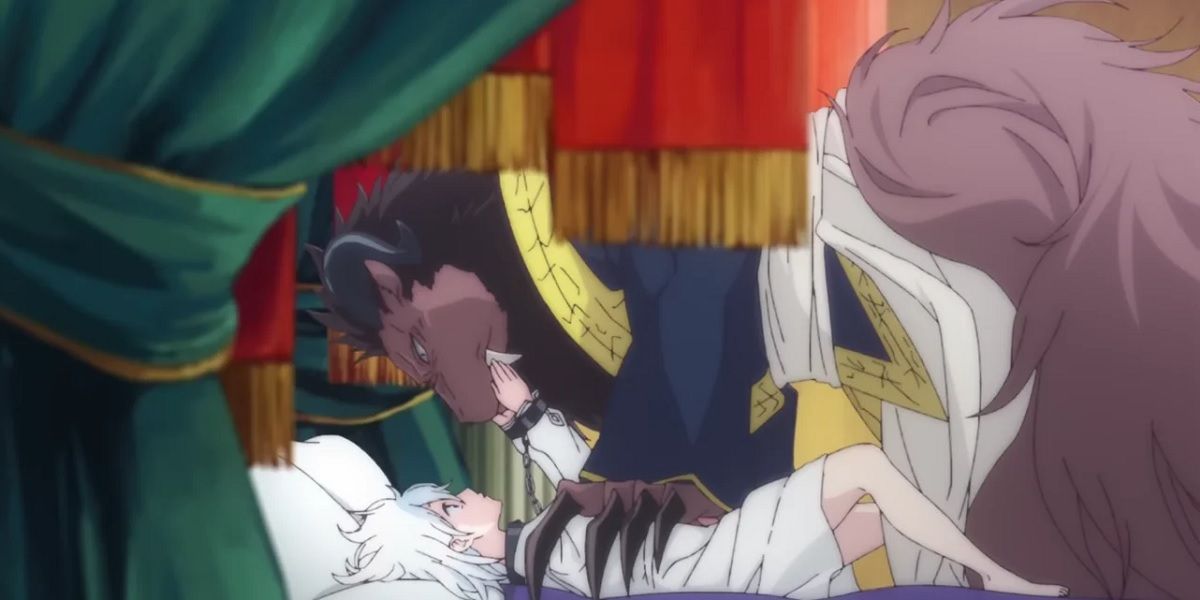As one of the very last shows to premiere as part of the Spring 2023 anime line-up, Sacrificial Princess and the King of Beasts was highly anticipated by plenty of viewers, especially those with a penchant for high fantasy and shojo romances. Although several anime mix the shojo demographic with high fantasy, such as Yona of the Dawn and Snow White with the Red Hair, these titles tend to be far outnumbered by other demographics and genres or involve heavy elements of isekai.
In contrast, Sacrificial Princess and the King of Beasts is set entirely in an alternative world, in which humanity and beastkind honor an uneasy peace after war ended between the two species 100 years prior. However, the series does at least in part feature a trope that's become fairly common to isekai titles: the slave girl.
The Plot of Sacrificial Princess and the King of Beasts/Niehime to Kemono no Ou
A century ago, war broke out between humans and beastkind. Once this great war finally ended, it became a yearly tradition that one female human sacrifice would be offered up to be eaten by the King of Beasts. A 15-year-old girl named Sariphi, nicknamed Sari, is the 99th such sacrifice, unknowingly adopted and raised by her foster parents for exactly this purpose. However, when Sari is delivered in chains to the miasma-covered beast kingdom of Ozmargo, where all other humans are prohibited, the King of Beasts quickly discovers that she is nothing like any of the sacrifices that came before -- and that both he and the future of his kingdom will be changed forever by her presence.
Based on a shojo manga published from 2015-2020, Sacrificial Princess and the King of Beasts -- also known as Niehime to Kemono no Ou -- is a fantasy romance series slated to run for 24 episodes. While the show certainly has some darker elements to it, the overall tone is relatively lighthearted thanks to Sari's relentlessly cheerful personality and how this contrasts with the Beast King Leonhart's intimidatingly gruff exterior. Clearly inspired by the classic fairy tale Beauty and the Beast, Sacrificial Princess and the King of Beasts will likely appeal to those seeking non-isekai fantasy titles or romance anime set in a world far removed from the usual Japanese high school setting.
How Sari Compares to Other Anime & Isekai Slave Girls as a Shojo Fantasy Romance Character
One element of Sacrificial Princess and the King of Beasts that's bound to stick out to viewers is Sariphi's initial "slave-girl" appearance. Although she grew up in a seemingly normal and outwardly happy household, the majority of the premiere sees her chained by her neck and wrists, and she is repeatedly threatened with torture and death by both her "owner" Leonhart and his subjects. Even nearer the end of the episode, Leonhart tells her, "You belong to me," which Sari makes no effort to refute. Her extremely youthful, petite and vulnerable character design, paired with her chains, may also put viewers in mind of other slave-girl characters such as Raphtalia (The Rising of the Shield Hero), Fran (Reincarnated as a Sword) and Efil (Black Summoner), seemingly playing into this now-common fantasy anime trope.
On the other hand, Sari's chains are both symbolically and literally broken by the end of the episode, and her extraordinarily optimistic and forthright demeanor does not paint her as a victim. She remains entirely undaunted by Leonhart or his threats and doesn't fear her upcoming sacrificial death, speaking to the King of Beasts like an equal, even gently chiding him for his behavior the way a mother might scold a young child. Moreover, as a shojo fantasy romance rather than a male-targeted isekai series, Sari is not played as passive or weak and defenseless. Since Sacrificial Princess and the King of Beasts is designed to appeal to adolescent girls, her character is instead framed as innately powerful despite her innocence. By the end of the premiere, her chains are broken both figuratively and literally, and she becomes the Queen of Beasts.
While Sacrificial Princess and the King of Beasts doesn't necessarily do anything to subvert anime's well-known slave girl trope, it also doesn't quite play into it -- at least, not in the traditional sense. Sari is a far cry from the types of female slaves commonly seen in many isekai titles, who tend to be psychologically scarred by their brutal backstories and form relationships of emotional dependence with the male lead. Rather, Sacrificial Princess has more in common with the likes of former slave Chise Hatori from The Ancient Magus' Bride -- although even here, Sari seems to be far better-adjusted and have more agency thanks to her naturally candid, upbeat personality and general lack of childhood trauma.



